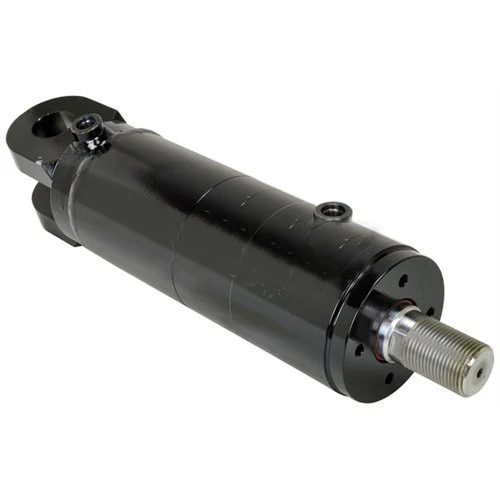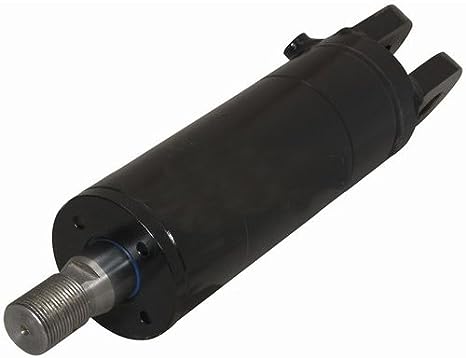Product Description
PRODUCT DESCRIPTION
Factory Direct Sales High Performance Helac L10-Series Helicalhydraulic Rotary Actuator Cylinder
Counterbalance Valve
Product Parameters
|
WL10 |
WL20 |
WL30 |
WL40 |
WL50 |
|
2, 3, 6, 10, 16, 27 |
5, 9, 16, 27, 72 |
19, 28, 47, 73, 105, 140, 180, 240 |
28, 50, 67 |
|
|
180° 360° |
180° |
180° 360° |
220° |
110° 134° 180° |
|
Q:Front Flange |
Q:Front Flange S:Double Flange |
Q:Front Flange S:Double Flange Z:Shaft Output |
H:Spindle |
|
|
H:Rear Flange |
D:Foot M:Straddle |
D:Foot H:Rear Flange Q:Front Flange G:Rail |
Q:Front Flange |
D:Foot |
|
Y:With Valve W:No Valve |
Y:With Valve W:No Valve |
Y:With Valve W:No Valve |
Y:With Valve W:No Valve |
Y:With Valve W:No Valve |
|
J:Standard D:Low Temp G:High Temp |
J:Standard D:Low Temp G:High Temp |
J:Standard D:Low Temp G:High Temp |
J:Standard D:Low Temp G:High Temp |
J:Standard D:Low Temp G:High Temp |
|
G:Imperial M:Metric D:Customized |
G:Imperial M:Metric D:Customized |
G:Imperial M:Metric D:Customized |
G:Imperial M:Metric D:Customized |
G:Imperial M:Metric D:Customized |
Interchangeability Chart
|
WEITAI |
PARKER |
|
WL10 Series |
Helac L10 |
|
WL20 Series |
Helac L20 |
|
WL30 Series |
Helac L30 |
|
WL40 Series |
Helac T20/T30 |
|
WL50 Series |
Customized |
* HKS and Moveco CHINAMFG solutions are available as well
Company Profile
Weitai Hydraulic is 1 of China's leading hydraulic suppliers, the earliest enterprise specializing in exporting mobile hydraulics. We are committed to providing excellent hydraulic products and services to both businesses and final consumers. Starting as a small OEM manufacturer of hydraulic cylinders, we grew into a global company specializing in research and development, production, and sales of high-end hydraulic parts. Hydraulic motors are 1 of our main products. In addition to our own factories, we are a shareholder of a top-quality hydraulic motor factory. All of our factories are ISO certified and all of our material suppliers have CE, RoHS, CSA and UL certificates. We don't just manufacture our standard motors, but can also design and customize motors based on our customers' requirements.
FAQ
Q1 How much do CHINAMFG rotary actuators cost?
Our prices are subject to change depending on order quantity, raw materials market fluctuactions, etc. We will send you an updated price list right after your company contacts us.
Q2 Do you have a minimum order quantity?
Yes, we require all international orders to have an ongoing minimum order quantity. Please contact us to learn more specific information.
Q3 Can you provide relevant documentation?
Yes, we are ready to provide all kinds of documents, including Certificate of Analysis/Certificate of Conformance, Insurance, Certificate of Origin, and others.
Q4 What is the average lead time?
For samples, the lead time is about 7 days. For mass production, the lead time is 20-30 days after receiving the deposit payment.
Q5 What kinds of payment methods do you accept?
You can make the payment to our bank account, Western Union or PayPal. 30% deposit in advance, 70% balance against the copy of B/L.
Q6 What is the product warranty?
1 year
| Certification: | ISO9001 |
|---|---|
| Working Method: | Rotary |
| Material: | Steel |
| Model: | Wl10 |
| Rotation: | 180°, 360° |
| Warranty: | 1 Year |
| Customization: |
Available
|
|
|---|

Can tilt cylinders be used in forestry equipment for tree handling?
Yes, tilt cylinders can be used in forestry equipment for tree handling. These cylinders play a vital role in enhancing the efficiency and safety of forestry machinery involved in tasks such as felling, delimbing, and loading trees. Here's a detailed explanation:
- Tilt Angle Adjustment: Tilt cylinders allow operators to adjust the tilt angle of forestry equipment attachments, such as grapples or felling heads. By actuating the cylinders, operators can tilt the attachment to the desired angle, facilitating precise tree handling. The ability to control the tilt angle enables operators to align the attachment with the tree trunk or branches, improving cutting accuracy and minimizing the risk of damage to the machinery or surrounding environment.
- Tree Gripping and Manipulation: Tilt cylinders contribute to effective tree gripping and manipulation. When combined with grapples or clamps, these cylinders provide the necessary force and control to securely hold and maneuver trees. Operators can adjust the tilt angle of the attachment to ensure a firm grip on the tree during felling, delimbing, or loading operations. This capability enhances operational safety, prevents tree slippage, and improves overall productivity.
- Load Distribution: Precise tree handling requires proper load distribution. Tilt cylinders allow operators to adjust the tilt angle to distribute the tree's weight evenly across the equipment. This optimization of load distribution is particularly important when handling large or heavy trees. By achieving balanced positioning through tilt cylinder control, operators can minimize stress on the equipment, maintain stability, and ensure safe tree handling.
- Integration with Control Systems: Tilt cylinders can be integrated with advanced control systems in modern forestry equipment. These control systems may include hydraulic or electronic controls that offer precise and automated tilt angle adjustments. By utilizing such systems, operators can achieve consistent and accurate tree handling, reducing operator fatigue and improving operational efficiency.
- Operator Safety and Ergonomics: Tilt cylinders contribute to operator safety and ergonomics during tree handling tasks. By allowing for precise tilt angle adjustments, these cylinders enable operators to maintain a comfortable and ergonomic working posture. This reduces the risk of strain or injury and enhances operator control and visibility, especially in challenging forestry environments.
- Attachment Versatility: Tilt cylinders provide versatility in forestry equipment attachments. They can be used in various configurations, such as single-acting or double-acting cylinders, depending on the specific application requirements. This versatility allows forestry machinery to handle different tree sizes, shapes, and conditions, adapting to the diverse needs of forestry operations.
Therefore, tilt cylinders can be effectively utilized in forestry equipment for tree handling. Whether it involves tilt angle adjustment, tree gripping and manipulation, load distribution optimization, integration with control systems, operator safety and ergonomics, or attachment versatility, tilt cylinders contribute to improving the efficiency, accuracy, and safety of tree handling operations in the forestry industry.

How does a tilt cylinder contribute to efficient and controlled tilting?
A tilt cylinder plays a crucial role in ensuring efficient and controlled tilting of heavy equipment. It incorporates several features and mechanisms that contribute to this functionality. Here's a detailed explanation:
- Hydraulic Power: Tilt cylinders are typically powered by hydraulic systems, which provide the necessary force for tilting. Hydraulic power allows for smooth and controlled movement, enabling operators to precisely adjust the tilt angle of the equipment.
- Adjustable Force and Speed: Tilt cylinders offer adjustable force and speed, allowing operators to customize the tilting action based on the specific task or load requirements. By adjusting the hydraulic pressure or flow rate, operators can control the force exerted by the cylinder and the speed at which the tilting movement occurs. This flexibility ensures efficient and controlled tilting, regardless of the load or terrain conditions.
- Position Feedback: Many tilt cylinders incorporate position feedback mechanisms, such as position sensors or encoders, which provide real-time information about the cylinder's tilt angle. This feedback enables precise positioning and control of the equipment, allowing operators to achieve the desired tilt angle accurately. It also ensures consistent and repeatable tilting performance, enhancing efficiency and productivity.
- Integrated Valves and Controls: Tilt cylinders often feature integrated valves and controls that enable operators to manipulate the tilting action conveniently. These valves regulate the flow of hydraulic fluid to the cylinder, allowing operators to control the direction and speed of the tilt. Integrated controls, such as joysticks or switches, provide intuitive operation and facilitate precise tilting adjustments.
- Stability and Load Management: Tilt cylinders are designed to maintain stability and manage loads during tilting operations. They are engineered to withstand the forces and stresses associated with heavy loads and dynamic movements. This ensures controlled tilting and minimizes the risk of instability or tipping, contributing to safe and efficient operation.
- Sealing and Lubrication: Tilt cylinders incorporate seals and lubrication systems to minimize friction and ensure smooth operation. Seals prevent leakage and contamination, maintaining the integrity of the hydraulic system. Proper lubrication of the cylinder's moving parts reduces wear and tear, enabling efficient and controlled tilting over an extended period.
By leveraging hydraulic power, offering adjustable force and speed, providing position feedback, integrating valves and controls, ensuring stability and load management, and incorporating sealing and lubrication systems, tilt cylinders contribute to efficient and controlled tilting of heavy equipment. These features empower operators to perform tasks with precision, optimize productivity, and maintain safe working conditions.

How does a tilt cylinder contribute to precise equipment tilt control?
A tilt cylinder plays a crucial role in achieving precise equipment tilt control. It provides the necessary force and control mechanisms to enable controlled and accurate tilting movements. Here's a detailed explanation of how a tilt cylinder contributes to precise equipment tilt control:
- Force Generation: A tilt cylinder is a hydraulic component that generates the force required to tilt or angle the equipment. It consists of a cylinder housing, piston, and rod assembly. When hydraulic pressure is applied to the cylinder, the piston moves, exerting force on the attached component. The force generated by the tilt cylinder allows for precise and controlled tilting of the equipment.
- Controlled Fluid Flow: Tilt cylinders utilize hydraulic fluid to transmit force and control the tilting movement. The flow of hydraulic fluid is regulated by control valves, which allow operators to control the speed, extent, and direction of the tilt. By adjusting the control valves, operators can achieve precise control over the fluid flow, enabling accurate and controlled tilting of the equipment.
- Range of Motion: Tilt cylinders provide a specific range of motion, allowing for controlled tilting within that range. The range of motion is determined by the design and construction of the cylinder, as well as the attachment points on the equipment. The defined range enables operators to tilt the equipment to the desired angle with precision, ensuring precise control over the tilt position.
- Feedback Mechanisms: Some tilt cylinders incorporate feedback mechanisms such as limit switches or sensors. These mechanisms provide real-time feedback on the position and angle of the tilted component. By monitoring the feedback, operators can precisely adjust the tilt cylinder to achieve the desired tilt angle. This feedback loop enhances the precision of equipment tilt control.
- Operator Input: Tilt cylinders are typically operated by equipment operators who have control over the hydraulic system. Operators can manipulate the control levers or buttons to adjust the hydraulic pressure and flow, thereby controlling the tilt cylinder's movement. The operator's skill and experience in operating the tilt cylinder contribute to achieving precise equipment tilt control.
By combining the force generation capabilities, controlled fluid flow, defined range of motion, feedback mechanisms, and operator input, a tilt cylinder enables precise control over the equipment's tilt. This precision is essential for applications where accurate tilting is required, such as in construction, mining, agriculture, and material handling. The ability to achieve precise equipment tilt control enhances operational efficiency, productivity, and safety in various industries.


editor by CX 2023-11-18